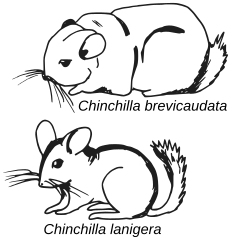Rain & Shine on the Way to Oakhurst
Mar. 28th, 2025 09:10 pmThis morning we set off on a road trip to Oakhurst. It's a jaunt of 175 miles, just a touch over 3 hours of driving without traffic. Having left at 9:47am (again, I mentally mark such things) I expected we could be hiking in the mountains above Oakhurst as soon as 1:30pm, after stops for lunch and probably gas along the way.
Just before we left, though, we heard the patter of rain on the roof. Not what we want to hear on a hiking day!

Indeed it rained for the first leg of the trip as we drove south from Sunnyvale. There was no rain in the forecast for the area around Oakhurst... though the weather still wouldn't be nice there. The forecast has called for clouds and high temps in the 50s on Friday since, like, a week ago. "There's a week to go, maybe it'll get better," I said to Hawk. Hahaha, no, that didn't happen.
It's especially a pisser that we get partly crummy weather for our weekend trip after it was so nice last weekend when I was traveling for work. It was 72 on Sunday, 80 on Monday, and a whopping 85 on Tuesday— the warmest day since a freak heat wave 5½ months ago. But now that I have a day off it's not even 60. 😡

One thing about it being the rainy season in California is that many of the mountains that are brown most of the year are green right now. This is the Pacheco Pass (Route 152) through the Diablo Mountains. The East Bay Hills (also part of the Diablo range) in the Bay Area are carpeted with green right now, too. It's enjoyable to see it because it's only a few weeks a year these mountains are green.

Here's another pic of the incredible greenery. This is overlooking the San Luis Reservoir on the east side of the pass. And yes, the rain had abated as we passed through here.
The skies stayed partly sunny/partly cloudy as we drove across the Central Valley. The sun even started feeling a bit intense as we drove up into the Sierra foothills. Heavy clouds hung over the higher ridges of the Sierra, though. Would our hiking spot be favored with sun or it would be it cursed by those rain clouds? It seemed like it would be a close decision....
Stay tuned for more!
Just before we left, though, we heard the patter of rain on the roof. Not what we want to hear on a hiking day!

Indeed it rained for the first leg of the trip as we drove south from Sunnyvale. There was no rain in the forecast for the area around Oakhurst... though the weather still wouldn't be nice there. The forecast has called for clouds and high temps in the 50s on Friday since, like, a week ago. "There's a week to go, maybe it'll get better," I said to Hawk. Hahaha, no, that didn't happen.
It's especially a pisser that we get partly crummy weather for our weekend trip after it was so nice last weekend when I was traveling for work. It was 72 on Sunday, 80 on Monday, and a whopping 85 on Tuesday— the warmest day since a freak heat wave 5½ months ago. But now that I have a day off it's not even 60. 😡

One thing about it being the rainy season in California is that many of the mountains that are brown most of the year are green right now. This is the Pacheco Pass (Route 152) through the Diablo Mountains. The East Bay Hills (also part of the Diablo range) in the Bay Area are carpeted with green right now, too. It's enjoyable to see it because it's only a few weeks a year these mountains are green.

Here's another pic of the incredible greenery. This is overlooking the San Luis Reservoir on the east side of the pass. And yes, the rain had abated as we passed through here.
The skies stayed partly sunny/partly cloudy as we drove across the Central Valley. The sun even started feeling a bit intense as we drove up into the Sierra foothills. Heavy clouds hung over the higher ridges of the Sierra, though. Would our hiking spot be favored with sun or it would be it cursed by those rain clouds? It seemed like it would be a close decision....
Stay tuned for more!









